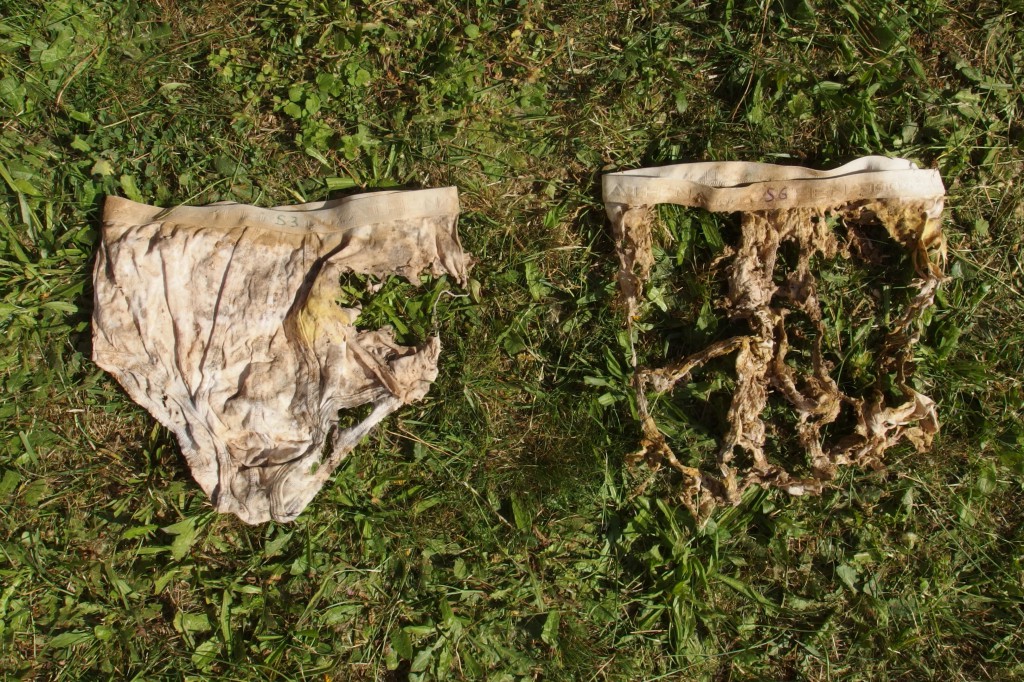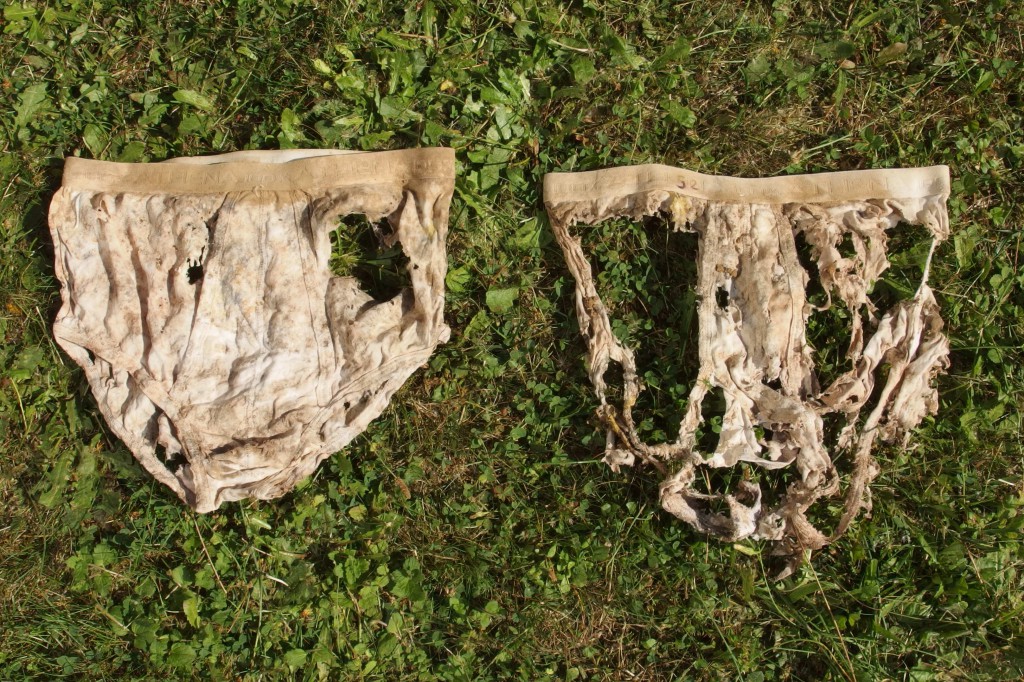Did someone say underwear?
13 novembre 2018New ideas and techniques are cropping up all over France; one such initiative trending at the moment involves burying underwear to gauge the biological activity in the soil; the results are quite surprising!
Micro-organisms play a fundamental role in soil fertility. As they decompose the organic matter supplied by plant residues, compost or manure, the bacteria and fungi in the soil unleash important minerals (N, P, K, etc.) that crops need to be able to grow.
This demonstrates how soil plays a far more complex role than just serving as a base for the roots, and this experiment provides visual evidence of the effects of micro-organisms on the decomposition of organic matter!
Try it
- You will need two XXL, 100% cotton briefs.
- Dig a trench on two plots where different farming techniques are applied (for example, a plot with an annual crop and a pasture, or a plot where tilling methods are used and a no-till plot).
- Bury the underwear in the top 15 centimetres of soil, leaving part of the waistband visible, and mark the spot with a stake so you can find it again.
- Dig up the underwear two to three months later and notice how different they look!
For best results, do this experiment during times of the year when micro-organisms in the soil are most active, like spring or autumn.
For more information about this protocol, click HERE
What do the results show?
It is important to remember that this experiment is mostly about giving visual results and does not provide scientific evidence as to the connection between the decomposition of the cotton and the quantity of living micro-organisms in the soil. In fact, cotton is made up of cellulose, which is a form of organic matter, among others. What’s more, all micro-organisms do not decompose all forms of organic matter, and climate also plays an important role too: in dry conditions, micro-organisms in the soil are less active, for example.

Wheat crop – previously corn – plot with tillage (on the left) and Minimal Cultivation Technique (on the right) – photo by Baptiste Fajfer/CAA.
That said, the results of the experiment will still show the differences in terms of the farming techniques or crop cover used on the soil, as can be seen in these photos of underwear which were buried from 19 April to 19 July 2018 on trial plots managed by the LIFE Alister project in the Obernai area.

Wheat crop – previously potato – no intermediary crop cover after potato harvest (on the left) and with intermediary crop cover after potato harvest (on the right) – photo by Baptiste Fajfer/CAA.
If you would like to have a go at this experiment, please check out and share your photos on social media using the hashtag #SoilYourUndies, or #SalissezVosBobettes!
Other affordable and scientifically approved methods can be used to measure the biological activity in the soil, such as the Tea Bag Index method: read about trials carried out by the Alsace Regional Chamber of Agriculture HERE




